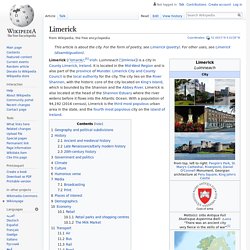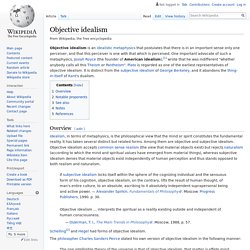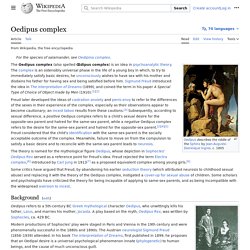

Karlfried Graf Dürckheim. Karl Friedrich Alfred Heinrich Ferdinand Maria Graf[1] Eckbrecht von Dürckheim-Montmartin (24 October 1896 – 28 December 1988) was a German diplomat, psychotherapist and Zen master.

A veteran of World War I, he was introduced to Zen Buddhism early in life. After obtaining a doctorate in psychology, he became an avid supporter of the Nazi Party. Following World War II he was imprisoned in Japan which transformed him spiritually. Upon returning to Germany he became a leading proponent of the Western esoteric spiritual tradition, synthesizing teachings from Christian Mysticism, Depth Psychology and Zen Buddhism.[2] Early life[edit]
Karlfried Graf Dürckheim. Limerick background : Poetry through the Ages. The limerick’s origins.

Although no one knows for sure, the limerick form is thought to have germinated in France during the Middle Ages, after which it crossed the English Channel. An 11th century manuscript demonstrates the limerick’s cadence: The lion is wondrous strong And full of the wiles of wo; And whether he pleye Or take his preye He cannot do but slo (slay) The form contains five lines with trimeter (three-beat) measures in the first, second, and fifth lines and dimeter (two-beat) measures in the second and fourth.
While this rhyme scheme of abccb differs from an Irish limerick, the similarity is unmistakable. The limerick became rooted in children’s literature thanks to Mother Goose nursery rhymes. From Shakespeare to Mother Goose. Limerick. City in Munster, Ireland Limerick (/ˈlɪmərɪk/;[5] Irish: Luimneach [ˈl̪imʲɨnʲəx]) is a city in County Limerick, Ireland.

Air - A double Limerick structure by Patricia Drake. Objective idealism. Objective idealism is an idealistic metaphysics that postulates that there is in an important sense only one perceiver, and that this perceiver is one with that which is perceived.

One important advocate of such a metaphysics, Josiah Royce (the founder of American idealism),[1] wrote that he was indifferent "whether anybody calls all this Theism or Pantheism". Solipsism. Solipsism ( i/ˈsɒlɨpsɪzəm/; from Latin solus, meaning "alone", and ipse, meaning "self")[1] is the philosophical idea that only one's own mind is sure to exist.

As an epistemological position, solipsism holds that knowledge of anything outside one's own mind is unsure; the external world and other minds cannot be known and might not exist outside the mind. As a metaphysical position, solipsism goes further to the conclusion that the world and other minds do not exist. Oedipus complex. The Oedipus complex (also spelled Œdipus complex) is a concept of psychoanalytic theory.

Sigmund Freud introduced the concept in his Interpretation of Dreams (1899) and coined the expression in his A Special Type of Choice of Object made by Men (1910).[1][2] The positive Oedipus complex refers to a child's unconscious sexual desire for the opposite-sex parent and hatred for the same-sex parent. The negative Oedipus complex refers to a child's unconscious sexual desire for the same-sex parent and hatred for the opposite-sex parent.[2][3][4] Freud considered that the child's identification with the same-sex parent is the successful outcome of the complex and that unsuccessful outcome of the complex might lead to neurosis, pedophilia, and homosexuality. Background[edit] Oedipus refers to a 5th-century BC Greek mythological character Oedipus, who unwittingly kills his father, Laius, and marries his mother, Jocasta. A play based on the myth, Oedipus Rex, was written by Sophocles, ca. 429 BC. Poet. English[edit] Alternative forms[edit] poët (rare or archaic)poete (rare or archaic) Etymology[edit]

Pieter de hooch - Buscar con Google. Pieter de Hooch. Pieter de Hooch (Dutch: [ˈpitər də ɦoːx], also spelled "Hoogh" or "Hooghe"; 20 December 1629 (baptized) – 24 March 1684 (buried)) was a Dutch Golden Age painter famous for his genre works of quiet domestic scenes with an open doorway.

He was a contemporary of Jan Vermeer in the Delft Guild of St. Luke, with whom his work shares themes and style. Lascaux Cave. Lascaux Cave is a Palaeolithic cave situated in southwestern France, near the village of Montignac in the Dordogne region, which houses some of the most famous examples of prehistoric cave paintings.

Close to 600 paintings – mostly of animals - dot the interior walls of the cave in impressive compositions. Horses are the most numerous, but deer, aurochs, ibex, bison, and even some felines can also be found. Besides these paintings, which represent most of the major images, there are also around 1400 engravings of a similar order. The art, dated to c. 17,000 – c. 15,000 BCE, falls within the Upper Palaeolithic period and was created by the clearly skilled hands of humans living in the area at that time. The region seems to be a hotspot; many beautifully decorated caves have been discovered there.
The discovery On 12 September 1940 CE four boys examined the fox hole down which their dog had fallen on the hill of Lascaux. Occupation by humans. The Science and Practice of Humility: The Path to Ultimate Freedom - Jason Gregory. M.youtube.